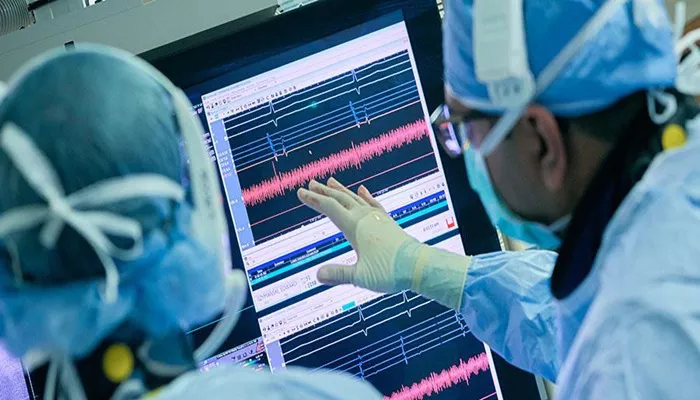Arrhythmias are conditions characterized by irregular heartbeats, which can lead to various health complications. These abnormalities can manifest as a heart beating too slowly (bradycardia), too quickly (tachycardia), or in an uncoordinated manner. The treatment of arrhythmias is a specialized field within cardiology known as electrophysiology.
Electrophysiologists are cardiologists who focus on the electrical activities of the heart and are experts in diagnosing and treating arrhythmias. This article explores the various treatments provided by electrophysiologists, detailing their methods and procedures.
The Role of Electrophysiologists
Electrophysiologists play a critical role in managing heart rhythm disorders. They utilize advanced diagnostic tools to identify the type and cause of arrhythmias. Following diagnosis, they recommend appropriate treatment options tailored to each patient’s specific condition. Treatments can range from lifestyle changes and medication to more invasive procedures such as catheter ablation and device implantation.
Diagnostic Procedures
Before any treatment can be initiated, electrophysiologists conduct thorough diagnostic evaluations. These may include:
Electrocardiogram (EKG): A standard test that records the electrical activity of the heart.
Holter Monitor: A portable device worn for 24-48 hours to track heart rhythms throughout daily activities.
Event Monitor: Similar to a Holter monitor but used for longer periods, activated by the patient when symptoms occur.
Electrophysiology Study (EPS): An invasive procedure where catheters are inserted into the heart to map electrical activity and locate abnormal pathways.
These tests help electrophysiologists understand the nature of the arrhythmia and determine the best course of action.
Treatment Options Provided by Electrophysiologists
Electrophysiologists offer a variety of treatments for arrhythmias, which can be broadly categorized into non-invasive, minimally invasive, and surgical options.
Non-Invasive Treatments
Lifestyle Modifications: Patients may be advised to make changes in their diet, exercise routines, and stress management techniques to help manage their arrhythmia.
Medications: Several classes of drugs can be prescribed based on the type of arrhythmia:
Anti-arrhythmic Drugs: Medications that help restore normal heart rhythm.
Beta-blockers: Used to slow down the heart rate and reduce blood pressure.
Calcium Channel Blockers: Help control heart rate and manage blood pressure.
Anticoagulants: Often prescribed for patients with atrial fibrillation to prevent stroke.
Minimally Invasive Procedures
Catheter Ablation: This is a common procedure where catheters are inserted into the heart through blood vessels. The electrophysiologist uses radiofrequency energy or cryotherapy to destroy small areas of heart tissue that are causing abnormal electrical signals. This procedure is particularly effective for conditions like atrial fibrillation, atrial flutter, and ventricular tachycardia.
Electrical Cardioversion: This procedure involves delivering a controlled electric shock to the heart to restore a normal rhythm. It is often used for patients with atrial fibrillation or flutter who have not responded to medications.
Insertable Loop Recorder (ILR): This small device is implanted under the skin in the chest area. It continuously monitors heart rhythms for extended periods (up to three years) and helps diagnose infrequent arrhythmias.
Surgical Treatments
Pacemaker Implantation: A pacemaker is a small device implanted under the skin that helps regulate slow heart rates by sending electrical impulses to stimulate heartbeat.
Implantable Cardioverter-Defibrillator (ICD): An ICD is similar to a pacemaker but has additional functions. It monitors heart rhythms and delivers shocks if it detects life-threatening arrhythmias, such as ventricular fibrillation.
Cardiac Resynchronization Therapy (CRT): This therapy involves implanting a special type of pacemaker that coordinates contractions between the left and right ventricles of the heart, improving efficiency in patients with heart failure.
Lead Extraction: In cases where leads from previously implanted devices become infected or malfunction, electrophysiologists perform lead extraction procedures using advanced techniques in specialized operating rooms.
Surgical Ablation Procedures: For patients with persistent atrial fibrillation who do not respond well to catheter ablation, surgical options such as the MAZE procedure may be considered. This involves creating scar tissue in specific areas of the heart to disrupt abnormal electrical pathways.
Hybrid Approaches: In some cases, electrophysiologists collaborate with cardiac surgeons for hybrid procedures that combine catheter techniques with surgical interventions for more complex arrhythmias.
Follow-Up Care
After treatment, follow-up care is essential for monitoring recovery and managing any ongoing symptoms. Patients with implanted devices require regular check-ups to ensure proper functioning and battery life management. Remote monitoring technology allows healthcare providers to track device performance without requiring frequent office visits.
Conclusion
Electrophysiologists provide comprehensive care for patients with arrhythmias through a combination of advanced diagnostic techniques and innovative treatment options. Their expertise allows them to tailor therapies based on individual patient needs, improving outcomes and quality of life for those affected by these conditions.
Related topics:


